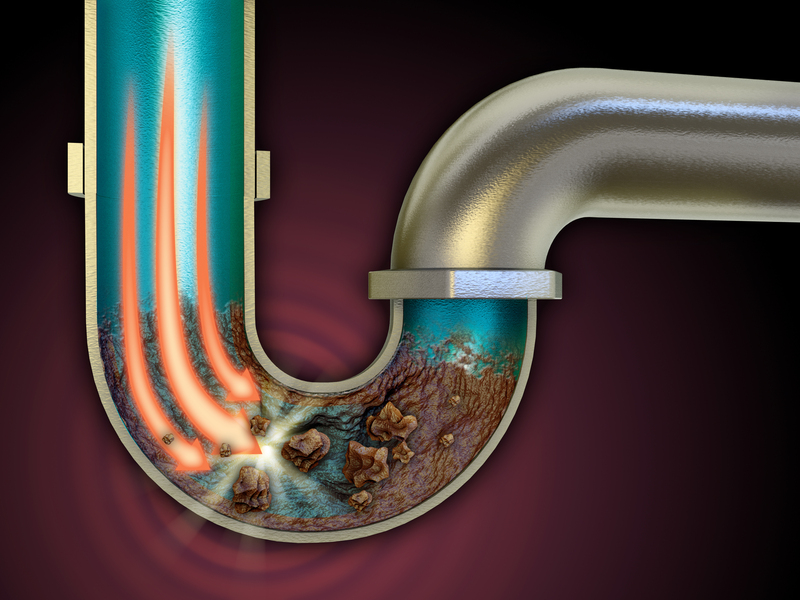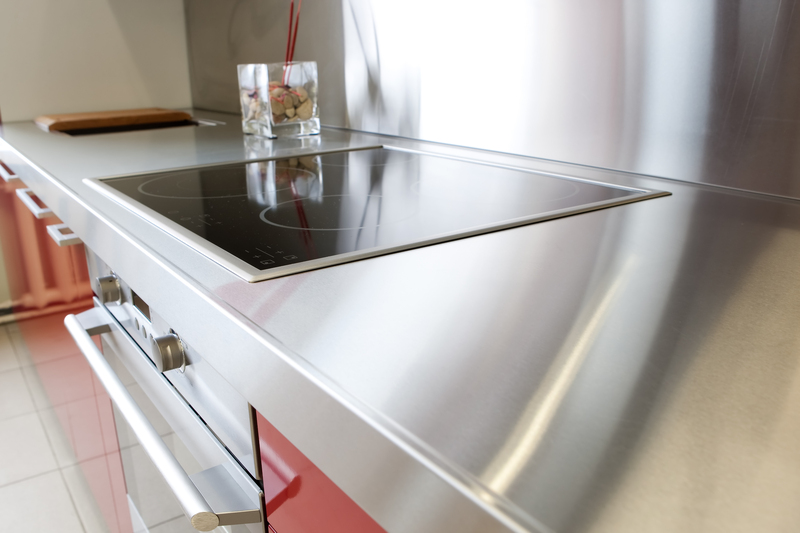Breathing Safely: Air Quality as a Cornerstone of Healthy Living Spaces
Imagine a home that feels as fresh as a morning walk through a forest. A home where every breath invigorates you, where the air is pure and healthy. This isn't just an idyllic fantasy; it starts with making air quality a fundamental aspect of your living space.
Why Breathing Safely is Essential for Healthy Homes
The places where we spend most of our time--homes, offices, schools--can impact our health more than we realize. Breathing safely isn't just about feeling comfortable; it's about protecting ourselves and our families from harmful particles, gases, and microbes that compromise our well-being.
Indoor Air Quality: An Overlooked Health Risk
According to the World Health Organization, poor indoor air quality is one of the top environmental health risks worldwide. Sadly, many people are exposed to unsafe air within their homes daily, increasing the risk of respiratory illnesses, allergies, heart disease, and even some cancers.
- Mold growth in damp environments can trigger asthma and allergic reactions.
- Pet dander and dust mites are leading contributors to allergic symptoms.
- Volatile organic compounds (VOCs) released from paints, cleaners, or new furniture can be toxic with prolonged exposure.
- Carbon monoxide from faulty appliances can be fatal if not detected.
- Radon gas--a naturally occurring radioactive gas--may accumulate indoors and lead to lung cancer.
Is your home as safe as it could be? Ensuring good air quality is more important than ever, especially as we spend more time indoors.

Sources of Indoor Air Pollution: What's in Your Air?
To create healthy living spaces, you need to know what you're breathing. Indoor air pollutants are surprisingly widespread, and their sources are often hidden in plain sight.
Common Indoor Air Pollutants
- Tobacco Smoke: Even secondhand smoke leaves behind harmful particulates that linger long after the cigarette is extinguished.
- Cooking Fumes: Oil, grease, and gas stoves generate airborne particles and gases like nitrogen dioxide.
- Cleaning Chemicals: Household products can emit VOCs and other toxins.
- Building Materials: Particle board, carpets, and finishing materials often emit formaldehyde and other VOCs.
- Poor Ventilation: Traps pollutants indoors, allowing them to accumulate to hazardous levels.
Outdoor Pollutants Seeping Indoors
Outdoor air pollution--such as traffic fumes, pollen, and industrial emissions--can enter your home through windows, doors, and cracks. This means that indoor air often mirrors or even worsens the pollution levels outside, especially in urban areas.
Health Impacts of Poor Air Quality in Living Spaces
The consequences of poor air quality in living spaces can be immediate and severe, or long-term and subtle. Both children and the elderly are especially vulnerable, but no one is completely immune.
Short-Term Effects
- Eye, nose, and throat irritation
- Headaches and dizziness
- Fatigue or difficulty concentrating
- Asthma attacks or worsened respiratory issues
Long-Term Risks
- Chronic asthma or bronchitis
- Heart disease
- Nervous system damage from chemical exposure
- Cancer (from prolonged radon or VOCs exposure)
Children living in homes with poor air quality often suffer from more frequent infections, developmental delays, or persistent coughs.
Establishing Air Quality as a Cornerstone of Healthy Living Spaces
So, how do we transform our homes into oases of clean air? The solution requires a proactive, multi-faceted approach.
1. Improve Ventilation
Allowing clean outdoor air to circulate inside dilutes indoor air pollutants. Opening windows regularly, using exhaust fans in bathrooms and kitchens, and installing mechanical ventilation systems (like HRVs or ERVs) are simple but effective steps.
- Ventilate while cleaning, painting, or using hazardous substances.
- Install trickle vents to allow a constant supply of fresh air.
- Consider advanced air exchange systems in energy-efficient homes.
2. Control Humidity
High humidity is a breeding ground for mold, dust mites, and bacteria--all bad news for breathing safely. Use dehumidifiers in damp climates and fix leaks promptly.
- Maintain indoor humidity between 30-50%.
- Ventilate bathrooms and laundry rooms to prevent moisture buildup.
3. Use Air Purifiers and Filters
HEPA filters can remove particulates like dust, pollen, and pet dander. For even cleaner air, consider units with activated carbon to absorb odors and VOCs.
- Place air purifiers in bedrooms and common areas for maximum benefit.
- Change HVAC filters every 3-6 months, or as recommended by your system manufacturer.
4. Choose Low-Emission Home Products
Select paints, furniture, and cleaners labeled as "low-VOC" or "no-VOC." Opt for green cleaning methods like vinegar, baking soda, and essential oils, which don't compromise indoor air.
- Let new furniture or carpets air out in a garage or outdoors before bringing them inside.
5. Monitor Indoor Air Quality
Invest in home air quality monitors for real-time information about pollutants, humidity, and temperature. These smart devices can alert you to dangerous levels of carbon monoxide, radon, or particulate matter.
- Use radon detectors--especially in basements.
- Check for excessive PM2.5 (fine particulate matter) if you live in a polluted city.
6. Maintain Cleanliness
Regular cleaning routines can remove dust, mold spores, and pet hair before they become airborne.
- Vacuum with HEPA-equipped machines.
- Launder bedding and curtains often.
- Wipe surfaces with a damp cloth to avoid distributing dust into the air.
Special Considerations: Creating Healthy Spaces for Everyone
Elderly and Immunocompromised Individuals
People with weakened immune systems, chronic respiratory illnesses, or the elderly are particularly sensitive to poor air quality indoors. For these groups, every improvement in clean air translates to better health and quality of life.
- Keep them away from areas being cleaned or renovated with harsh chemicals.
- Ensure their spaces have reliable air filtration and ventilation.
Households with Children or Pets
Children's lungs and immune systems are still developing, so exposure to even small amounts of pollutants can have lifelong impacts. Likewise, pets can both contribute to and suffer from air quality issues.
- Choose non-toxic cleaning agents and avoid smoking indoors.
- Bathe pets regularly and limit their access to outdoor pollutants.
Technological Innovations and Smart Solutions for Better Air Quality
Modern Air Purifiers and Smart Devices
Technology is making breathing safely at home simpler and more accessible than ever. High-tech air purifiers, IoT-enabled air quality monitors, and autonomous ventilation systems now offer comprehensive, automated management of indoor air.
- Smart thermostats with integrated air sensors can adjust ventilation automatically.
- Mobile apps provide real-time alerts and suggestions to optimize your air quality data.
- UV-C light filters can deactivate bacteria and viruses as air flows through your HVAC system.
Green Building Design
New construction methods are prioritizing clean air as never before:
- Use of natural, non-toxic building materials
- Designing homes for cross-ventilation and daylight to avoid dampness
- Integrating gardens, living walls, and indoor plants to enhance air purification
Tip: While some indoor plants can slightly improve air purity, they are not a substitute for proper filtration and ventilation systems.
The Economic and Societal Benefits of Improved Air Quality
Productivity, Comfort, and Peace of Mind
Cleaner air doesn't just benefit health--it also enhances productivity and well-being. Studies have shown that improved air quality in the home and office dramatically reduces sick days, boosts mental clarity, and leads to better sleep. A safe, comfortable environment reduces stress levels for everyone.
Reducing Healthcare Costs
Reducing exposure to harmful airborne substances can prevent costly and chronic illnesses. The long-term savings on healthcare for families, businesses, and society at large can be significant.
Environmental Impact
By using fewer harsh chemicals, choosing natural home materials, and improving ventilation, homes can have a lighter environmental footprint. This not only helps your family but also contributes to a healthier planet.

Taking Action: Your Home Air Quality Checklist
Use this checklist to create healthy living spaces that make safe breathing a priority:
- Open windows or use exhaust fans daily
- Control humidity with dehumidifiers and prompt leak repair
- Vacuum and dust regularly with HEPA products
- Install and maintain air filters and purifiers
- Choose low-VOC paints, cleaners, and materials
- Test for radon and monitor CO levels
- Keep pets and bedding clean
Conclusion: Breathe Easy, Live Healthy
Your home should be a sanctuary for your health--beginning with the air you breathe each day and night. By making air quality a cornerstone of healthy living spaces, you not only reduce the risk of illness but also improve comfort, sustainability, and mental peace for all who live under your roof.
Take action now and make breathing safely an integral part of your home design and daily routine. Because in the end, every breath counts toward a healthier, longer, and happier life.


